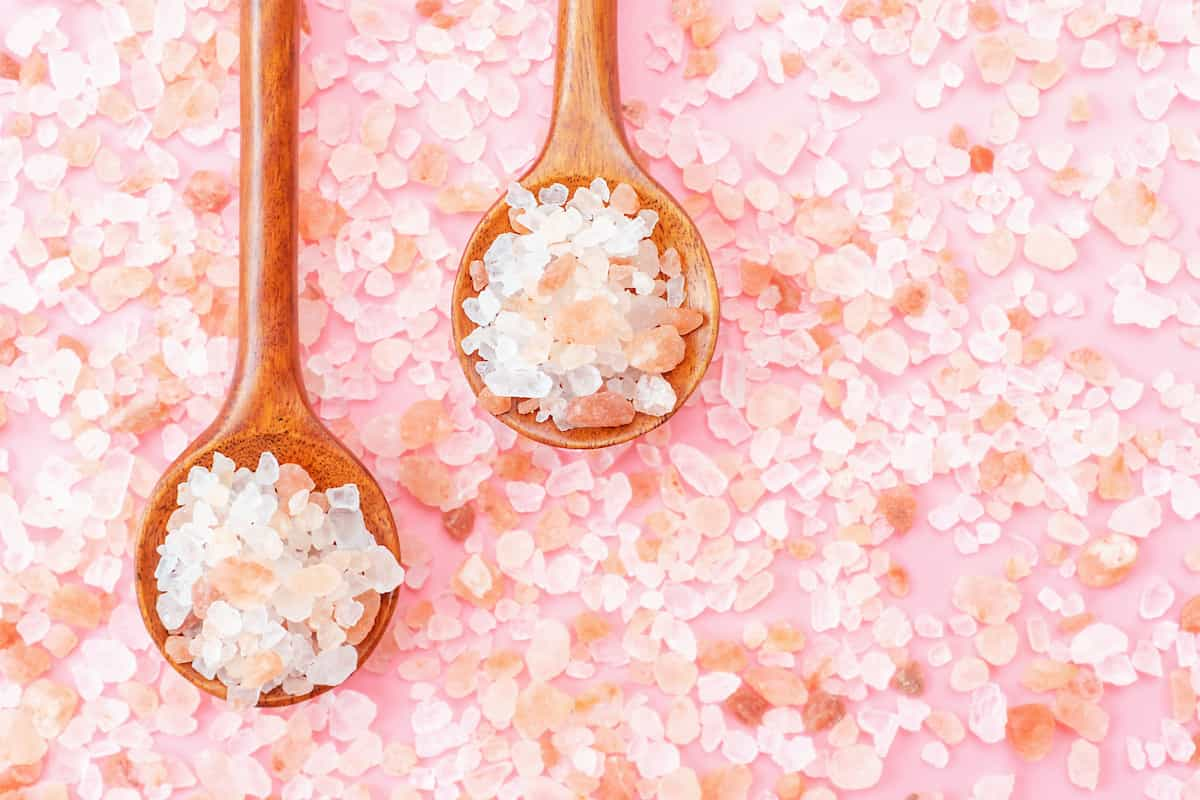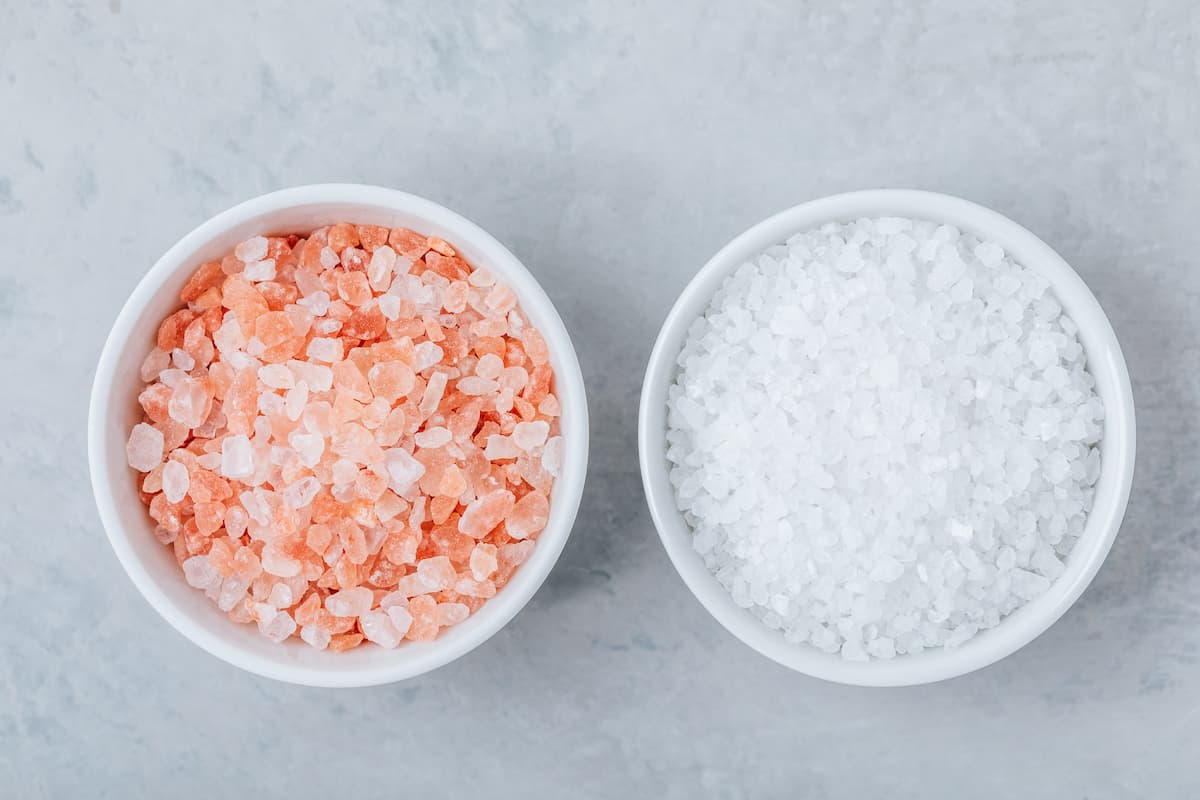Himalayan salt is known for its many beneficial properties, and it appears it can also be used to benefit houseplants. Himalayan salt has numerous trace minerals and electrolytes that can help enrich the soil and encourage healthy growth for various houseplants.

The Benefits of Using Himalayan Salt for Plants
What Is Himalayan Salt?
The mineral composition of Himalayan salt is particularly high in sodium chloride, potassium chloride, and magnesium chloride. It can also be used to condition plants because it helps to increase their water retention and plant growth. When applying Himalayan salt to plants, be sure to dilute it first with water or another liquid before using it so that the plant isn’t overly salty. This salt has several unique properties, making it an ideal choice for gardening.
When to Apply Himalayan Salt in Your Garden?
Himalayan salt can be applied to a plant at any time during its growth cycle but is especially beneficial when applied early in the growing season. This is because the mineral content of Himalayan salt is higher during the early stages of plant life. For best results, sprinkle a small amount of Himalayan salt directly on the soil surface and then rake it into the dirt.
It’s best to use salt when there are signs of deficiencies, such as yellowing leaves or withered plants. You can sprinkle a little salt on your plants at the beginning of each watering cycle or add it to your fertilizer mix before application. Keep in mind that too much salt will damage plants, so err on caution. Always read product labels first before making any changes to your garden.
In case you missed it: Epsom Salt Benefits for Your Garden Plants: Application Methods

Tips for Using Himalayan Salt for Plants
- Use it as a regular soil amendment: Sprinkle some Himalayan salt on the surface of your garden soil and work it into the dirt. This will help increase the number of minerals and trace elements your plants can uptake.
- Add it to your watering solution: Use Himalayan salt dissolved in water droplets as an irrigation solution for your plants. This will provide them with essential minerals and trace elements they may not get from other sources.
- Use it as a topical treatment: Mix one teaspoon of Himalayan salt with 1 gallon of water and topically apply it to plant wounds or infected areas. This will help heal the plant quickly and provide it with essential minerals and trace elements.
Benefits of Himalayan Salt for Houseplants
- Himalayan salt is a mineral-rich salt that can be used to improve plant growth.
- It can be used as a natural pesticide or to control pests.
- It helps to clean up polluted water and soil, making it an effective addition to gardens and landscaping projects.
- It has anti-inflammatory properties, which can help improve the overall health of plants.
- It enhances the uptake of other nutrients by plants, making it a valuable supplement for them.
- It is non-toxic and safe for children and pets, making it a convenient choice for gardeners and homeowners.
- It can be used in indoor and outdoor gardens, providing benefits regardless of location or climate conditions.
- In some cases, it has been known to speed up plant growth rates by up to 50%.
- Applying Himalayan salt to plants can be a helpful way to eliminate weeds. Salt helps draw water and other nutrients from the soil, making it an effective weed killer. Salt can also inhibit the growth of other plants nearby.
- It has antimicrobial properties that can help protect plants against pests and diseases. It also contains trace elements that support plant growth and health. Combined with other garden additives, such as compost or lime, it can make your garden more resistant to common problems.
- It is high in sodium and other essential minerals that help improve soil fertility. When applied correctly, it can help increase the number of healthy microorganisms, which breaks down organic material and helps add nutrients to the soil.
- Adding Himalayan salt to your garden can bring out the colors in flowers and vegetables, making them more vibrant. It also adds a nice texture to plants, helping them retain moisture and stay healthy during dry periods.
Ways to Use Himalayan Salt for Plants
- Add it to water – One way to add Himalayan salt to your watering system is to put it in a bucket or pot and fill it with water. Then, pour the water into another container and add the salt. Mix well and give your plants a good drink.
- Use it as a soil additive – Another way to use Himalayan salt is to sprinkle it on top of the soil before planting seeds or seedlings. This will help them get started in their new home quickly and with less stress.
- Sprinkle it on foliage – One final way to use Himalayan salt is as a foliar spray. This will help keep pests away and add nutrients to the plant’s system while protecting it from UV radiation damage (which can cause browning).
- Rinse off after using – Finally, rinse off any excess Himalayan salt once you’re done using it so that you don’t leave anything harmful on your plant’s leaves or roots behind.
In case you missed it: How to Start a Fruits and Vegetables Export in India: A Profitable Agriculture Business

How to Use Himalayan Salt for Plants
- Himalayan salt is a powerful and natural plant fertilizer used in the Himalayas for centuries. It comprises sodium, potassium, and magnesium ions, essential for plant growth.
- To use Himalayan salt for plants, you must gather it yourself. You can either buy it online or find it at local stores.
- Start by wetting the area where you want to apply the salt. This will help distribute the salt evenly throughout the soil.
- Add enough salt to cover the area with a thin layer. Make sure not to over-apply it, as this can damage your plants.
- Let the salt sit in the soil for at least 24 hours before planting your vegetables or flowers. This will allow it to reach deep into the soil and fertilize your plants properly.
Conclusion
Himalayan salt is unique because it’s mineral-rich with elements like magnesium, potassium, and chlorine. This makes it an ideal additive for plant growth and soil health. Himalayan salt is a valuable resource that can improve plant growth.
- Feed Your Flock for Less: Top 10 Tips to Save on Chicken Feed
- Ultimate Guide to Ossabaw Island Hog: Breeding, Raising, Diet, and Care
- Hatching Answers: The Top 10 Reasons Your Chickens Aren’t Laying Eggs
- Eggs and Economics: Breaking Down the Cost of Raising Backyard Chickens
- Defend Your Greens: Proven Methods to Keep Iguanas Out of Your Garden
- Ultimate Guide to Cinnamon Queen Chicken: A Comprehensive Guide for Beginners
- Ultimate Guide to California Tan Chicken: Breeding, Raising, Diet, Egg-Production and Care
- Ultimate Guide to Marsh Daisy Chicken: Breeding, Raising, Diet, and Care
- 10 Types of Chicken Farming Businesses You Can Start for Profits
This information is so powerful on how to use Himalayan salt in the garden. Thank you so much for the information.
Your blog post was a breath of fresh air. The writing style was engaging, and the content was informative without being overwhelming. I enjoyed the way you simplified complex ideas.
Thank you for this info